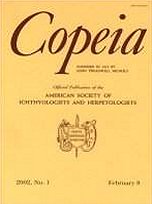Slender-bodied, diurnal “sand snakes” of the genus Psammophis are widespread and abundant through Africa, but the general biology of these animals remains poorly known. For example, sexual dimorphism is unstudied because it is difficult to determine the sex of live specimens (uniquely among snakes, the male hemipenis is vestigial). Our dissections of 700 preserved specimens provide detailed ecological information on ten psammophiine species from southern Africa. Males grow larger than females in most taxa, especially in species of large absolute body size. However, sex differences in body proportions (relative head size, relative tail length) are minor. Females produce small clutches (generally <10 eggs), with larger clutches in larger females in some but not all species. Psammophylax tritaeniatus differs from the nine Psammophis species studied in its higher fecundity and its primary reliance on mammalian rather than reptilian prey. Within Psammophis, five species (P. brevirostris, P. jallae, P. leopardinus, P. subtaeniatus, P. trigrammus) fed mostly on scincid lizards, two (P. namibensis, P. notostictus) fed mostly on lacertid lizards, and two (P. trinasalis, P. mossambicus) took approximately equal numbers of lizards and mammals. Although dietary composition thus varied with snake species and body size, conspecific males and females took similar prey types. Thus, despite reports of unusual mating systems in captive psammophiines, these snakes exhibit only minor sexual dimorphism in size, bodily proportions, and dietary habits.
How to translate text using browser tools
1 December 2006
Sexual Dimorphism, Reproductive Biology, and Dietary Habits of Psammophiine Snakes (Colubridae) from Southern Africa
Richard Shine,
William R. Branch,
Jonathan K. Webb,
Peter S. Harlow,
Terri Shine
ACCESS THE FULL ARTICLE





